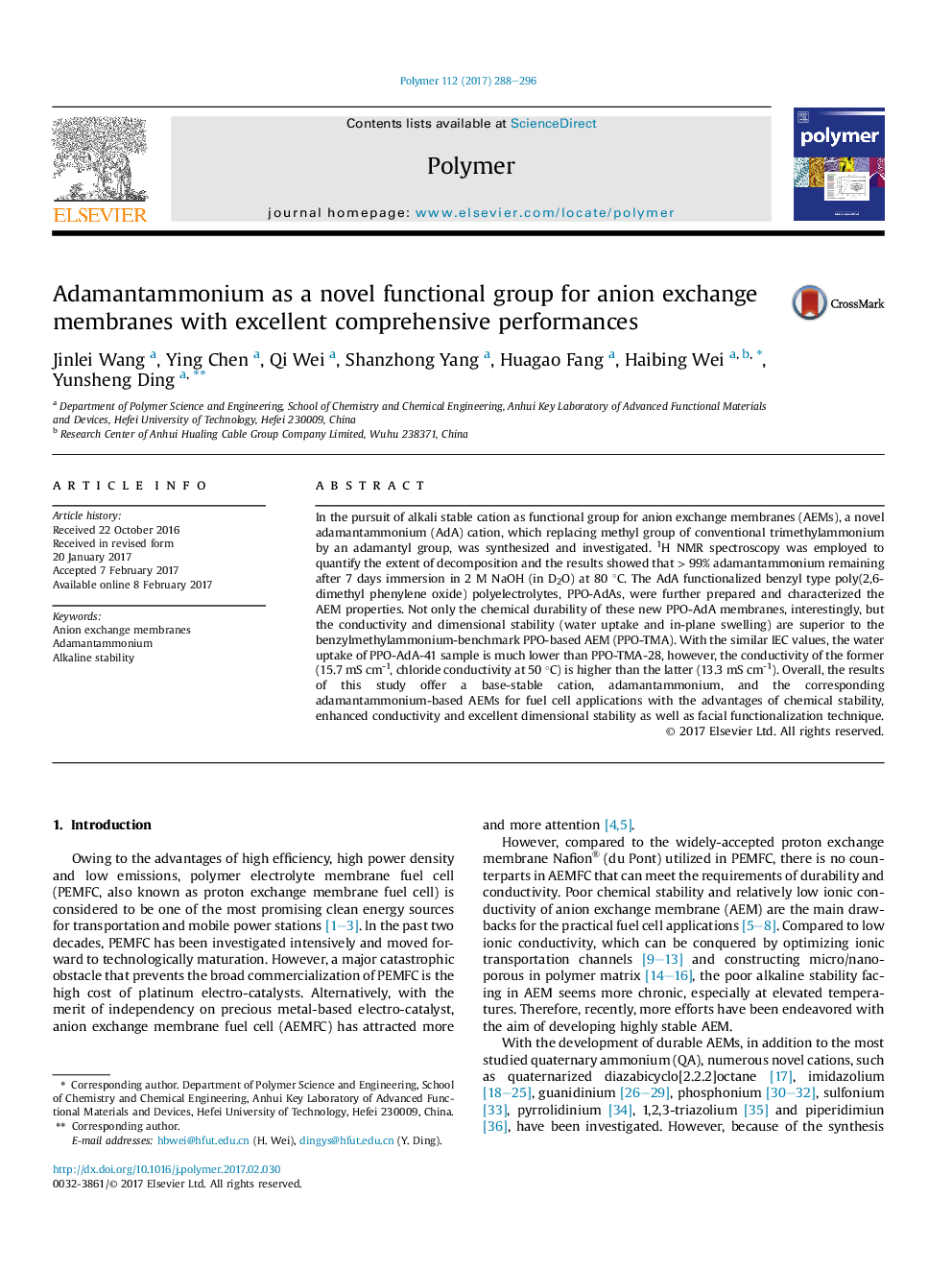| Article ID | Journal | Published Year | Pages | File Type |
|---|---|---|---|---|
| 5178408 | Polymer | 2017 | 9 Pages |
â¢A novel adamantammonium cation with high alkaline stability for AEM applications was reported.â¢The benzyl type AEMs based on adamantammonium show improved alkaline durability than benzylmethylammonium-benchmark AEM.â¢The membranes exhibit high ionic conductivity and excellent dimensional stability.
In the pursuit of alkali stable cation as functional group for anion exchange membranes (AEMs), a novel adamantammonium (AdA) cation, which replacing methyl group of conventional trimethylammonium by an adamantyl group, was synthesized and investigated. 1H NMR spectroscopy was employed to quantify the extent of decomposition and the results showed that > 99% adamantammonium remaining after 7 days immersion in 2 M NaOH (in D2O) at 80 °C. The AdA functionalized benzyl type poly(2,6-dimethyl phenylene oxide) polyelectrolytes, PPO-AdAs, were further prepared and characterized the AEM properties. Not only the chemical durability of these new PPO-AdA membranes, interestingly, but the conductivity and dimensional stability (water uptake and in-plane swelling) are superior to the benzylmethylammonium-benchmark PPO-based AEM (PPO-TMA). With the similar IEC values, the water uptake of PPO-AdA-41 sample is much lower than PPO-TMA-28, however, the conductivity of the former (15.7 mS cm-1, chloride conductivity at 50 °C) is higher than the latter (13.3 mS cm-1). Overall, the results of this study offer a base-stable cation, adamantammonium, and the corresponding adamantammonium-based AEMs for fuel cell applications with the advantages of chemical stability, enhanced conductivity and excellent dimensional stability as well as facial functionalization technique.
Graphical abstractDownload high-res image (134KB)Download full-size image
